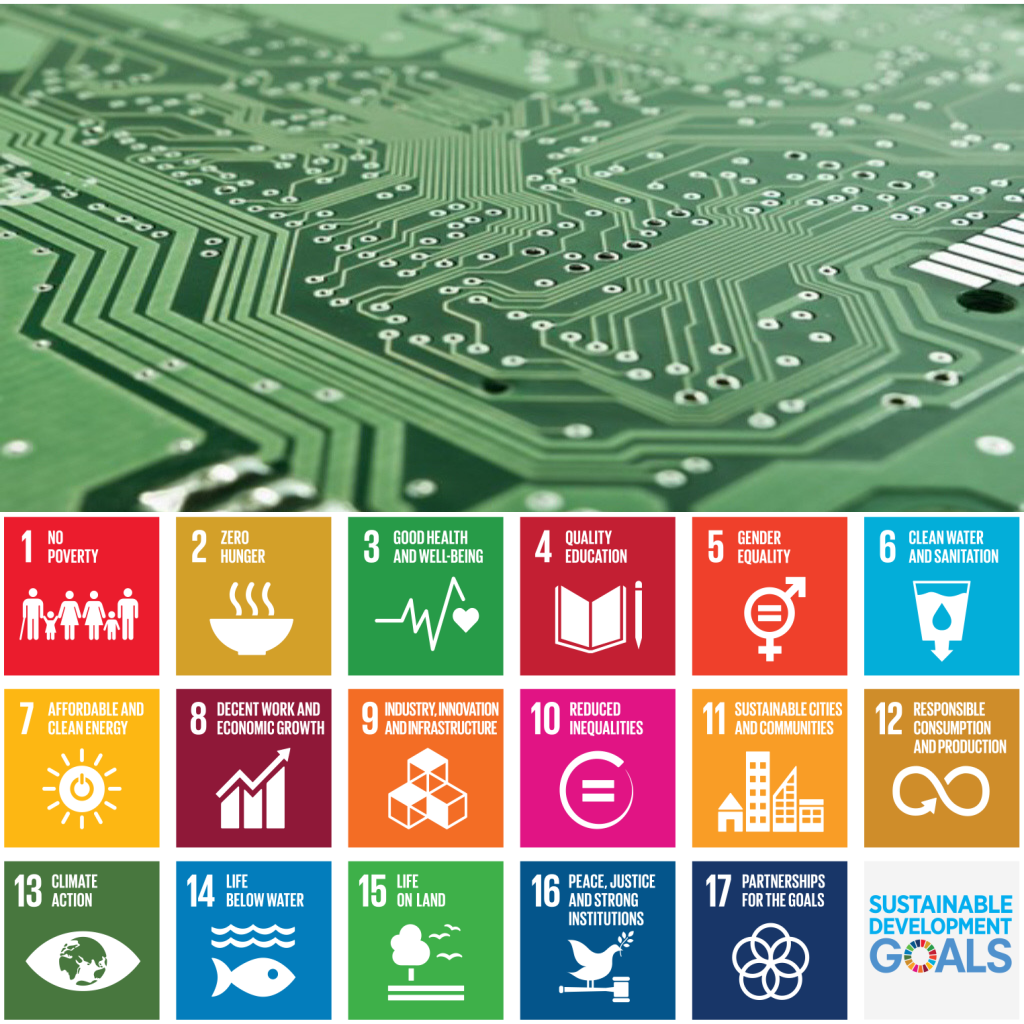Using Digital Technology to Improve Sustainable Development Goal (SDG) Delivery

by David Fellows and Glyn Evans[1]
The SDGs
The United Nation’s SDGs present an array of complex social, engineering, medical, scientific and managerial challenges for member states set in different contexts and mostly requiring very significant investment, organisational capacity and community involvement. Nations have made commitments to this agenda and it is accepted as guiding the key purposes of international development work worldwide. It is a hugely ambitious enterprise yet we suggest that current development work could be more successful.
The need for a powerful learning system
At a general level perhaps the greatest challenge is the creation of a learning system that is powerful enough to develop and distribute relevant knowledge and an understanding of how that knowledge can be best applied in the very different circumstances that exist across the world. As SDG performance criteria are finalised and adopted a report by ESCAP makes it clear just how difficult it is going to be to make a real difference.
We are not suggesting a great deal of organisation to create this necessary learning system. We propose a loose system of networking between experts based on digital communication. This would enable advice to be made available to community-based projects with greater levels of expertise being made available to the development of major programmes and projects. It would also facilitate feedback on project progress and performance. The use of digital technology would also improve the public information base and support public engagement.
Learning system features
The basis of this networking would be a digital communication system that would be largely self-driven by those in the field and a support network that will evolve around them. Key aspects of this digital communication system are illustrated below.
At national and local level:
- Provide feedback on progress made at
local level within the country - Request the public to identify key factors to be taken into account
when designing SDG initiatives - Seek feedback on the regulations
required to support SDG initiatives - Engage in shared learning (perhaps amongst scattered populations) between ordinary people who are trying to cope
with SDG challenges on limited resources
At regional level:
- Undertake shared research programmes
- Share experiences of adapting recognised approaches to particular circumstances
- Improve monitoring techniques
- Share monitoring and advisory services
- Encourage the development of problem-solving support networks
- Undertake peer reviews of projects and governance arrangements
At international level:
- Build worldwide expertise to address fundamental scientific, engineering, economic, social and implimentation challenges
- Identify and promote successful strategies and initiatives
- Recognise issues for which effective solutions remain elusive
- Create networks capable of addressing significant and urgent challenges
- Develop modeling tools to help design solutions
Supporting technology would include:
- Websites including chat rooms, website messaging, on-line data monitoring and
online questionnaires - Video-conferencing for expert dialogue and advisory
sessions - Cloud-stored databases and shared document development
- Email for public interactions( newsletters), dispatch of documents,
technical & administrative correspondence and technical update circulars - Learning management systems to support training programmes that
develop skills and expertise - Application software to assist the gathering of performance data
including the collection of data from administrative sources (ESCAP Report ibid:
page x) - Text messaging and social media for public dialogue
- Massive open online courses to raise general awareness
In general such a system would require relatively unsophisticated technology dependent only on fairly low level digital communication. Expert dialogue would tend to benefit from good connectivity at reasonable bandwidth to support video conferencing although this is not absolutely essential. Proprietary software is readily available for most of these applications although bespoke monitoring, modelling and assessment tools could be created as the approach gained traction.
Examples from around the world
Our blog ‘An International eCollaboration Route to Public Service Reform’
(also published by the Australian National University’s DEVPOLICYBLOG in July 2017) considers the diverse power of digital communication technologies. Examples of this technology used in ways relevant to this proposition are, as follows:
1. An example of ‘Shared Learning’ is set out in the UNESCO publication Digital Services for Education in Africa. UNICEF has reported that in Vietnam 40% of children in rural areas used the internet for educational purposes, rising to 62% in urban areas.
2. Communities of practice have already been established in Canada for green climate purposes
3. Social media has been used by PFMConnect for the past three years to raise public awareness on public financial management and governance topics reaching significant numbers of people in more than 50 countries.
Conclusion
This is not a system requiring heavy oversight and regulation. We seek cultural change to the way programmes and projects are developed. A more inclusive approach at expert and community level could be usefully supported by major development agencies and could become a requirement on contractors. For instance, these proposals could help the Green Climate Fund which appears to be heavily engaged in process issues at the expense of shared innovation.
Is it time to experiment with change?
End note
We should be pleased to discuss the ideas in this piece with those who believe that they may have relevance to their situation.
[1] David Fellows is a specialist in public financial management and digital government reform and is a director of PFMConnect. He is a recipient of the Swedish Prize for Democratic Digital Service Delivery. Glyn Evans is the Vice President of the Major Cities of Europe IT Users Group and former CIO of various major cities.


 Small island developing states’ economic challenges
Small island developing states’ economic challenges